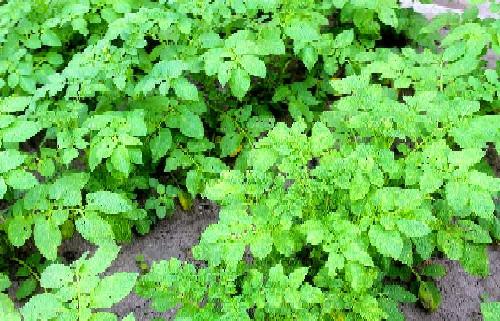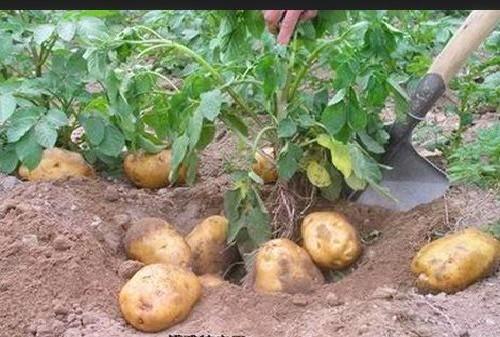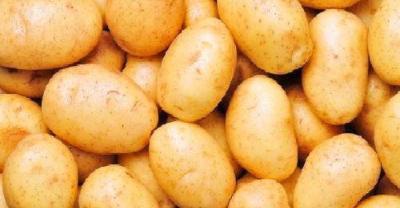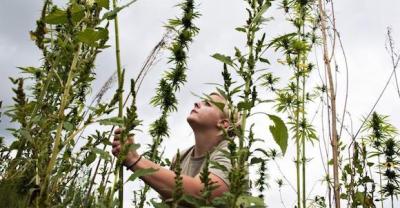High-yield potato planting techniques: potato planting technology and management, integrated control of potato diseases and insect pests
Potato is the most important food crop used as human staple food except grain in the world, and it mainly eats its underground tubers. It has been widely planted all over the world and thousands of varieties have been cultivated. Today we are going to learn about the techniques of growing potatoes.

Planting techniques of Potato
1. Slicing and budding
20 days before sowing, the germination began at about the beginning of March. When potatoes are cut into pieces, each piece has at least one sprout eye. 10 yuan and 15 yuan per jin is suitable. After cutting, the seeds were soaked in water for sterilization and disinfection with small ash dry mixture or carbendazim powder 1: 200 times. There are two ways to accelerate sprouting in the seedling bed after the seed block has been dried:
One is to sprout with sand in the corner of the house above 15 ℃ at room temperature, one layer of sand and one layer of seed block.
The second is to dig a pit to promote sprouting in the east-west direction of the outdoor ventilation and sunrise, the pit depth is about 25 cm, a layer of sand, 3 layers is appropriate, and then covered with arch shed film, covered with grass curtain at night. The above two methods should be sprinkled for 1 or 2 times during budding to prevent drying. When the bud grows to 0.5 cm and 1.0 cm long, it begins to sow seeds.
2. Soil preparation and trenching
Look at the soil moisture before planting, if the soil moisture is not good, you can consider irrigation ditch to create soil moisture, during the period of soil moisture should be 7-10 days before planting. Potato planting is generally double-ditch planting, ditching can use a large row of 50 cm, a small row of 40 cm.

3. Sowing and covering the film
The Spring Equinox to Qingming Festival is the best period, what should be specially pointed out here is that virus-free potatoes can be sowed in advance, finished before the Spring Equinox, and the plant distance can be controlled at 20 cm. Before sowing, 10 000 times of water was sprayed with caprylic sulfuric acid to prevent underground pests. Organic fertilizer can be sprinkled directly into the ditch or during soil preparation; chemical fertilizer can be put into the ditch or scattered between the seed blocks (be careful not to come into direct contact with the seed block). When sowing, there are two ways to put the seed block into the ditch: one is to put the seed bud down, the potato root grows strong, the potato root is small, but the potato block is large, but the seedling is 2-3 days late; the other method is to plant bud up, the potato root is relatively short, the potato is small but more, and the seedling is 2-3 days earlier. After the end of the planting, take soil from both sides of the big row to cover the space of the potato ditch and the small line, and add microfilm to cover and compact strictly.
4. emergence and release of seedlings and management of seedling stage
After the Qingming Festival, about 20 days after sowing, there is seedling exposed soil, at this time, the microfilm can be scratched and released to prevent steaming seedlings. When the seedling grows to 10 cm high, the film around the seedling is pressed tightly with soil to preserve water and press the grass. Potatoes should not be watered in the early stage of growth, and should be watered after flowering. If the weather is dry and there is no rain, it can be watered every 10 days, generally 2 or 3 times, and stop watering 10 days before harvest. Prevent insect pests such as aphids or thrips at seedling stage.
5. Rational fertilization
Potatoes like to apply farm manure, which is suitable for every 666.7 square meters. At the same time, nitrogen, phosphorus and potassium should be used together when applying chemical fertilizer properly. Potatoes require a large amount of potassium, and the scientific and reasonable proportion of nitrogen, phosphorus and potassium is 1.85. Potatoes like to absorb ammonium nitrogen and absorb more sulfur. According to the experiment, each additional kilogram of potassium sulfate fertilizer can increase the yield of potatoes by 100kg to 150kg.

Control of Diseases and insect pests in Potato
1. Ring rot. After getting the disease, the seedlings grow slowly, the leaflets wrinkle, curl the leaves, and die in severe cases. When flowering, the disease wilted from bottom to top, and then withered, cut the diseased potato, you can see milk or brown ring rot. Ring rot is mainly seed potato with virus, and disease-free seed potato is mainly selected for prevention and control, and attention is paid to disinfecting knives when cutting pieces to prevent infection.
2. Virus. The symptoms are short plants, slow growth, downward curling leaves, dark green leaves and so on. The prevention and control of virus diseases should be carried out from three aspects: 1. When planting, select disease-resistant varieties, or use whole potatoes as seeds or real potatoes as seeds. 2. To control aphids in time and prevent them from spreading the virus, 40% omethoate can be sprayed 1000 times. 3. After the onset of the disease, the virus A 25 grams and water can be sprayed into 500 times of the liquid.
3. Insect pests. The main pests of potato are 28 lady beetles and grubs. Ladybugs can be sprayed with 1000 times 80% trichlorfon WP or 80% dichlorvos EC or 2.5% dichlorvos EC or 10% cypermethrin EC 3000 times, once every 10 days. Integrated control of grubs is generally adopted. Such as not applying immature fertilizer, artificial hunting, trapping and killing adults with black light, and so on.
The main purpose of chemical control is to control larvae. The ratio of 50% phoxim, water and seeds is 1-50-50-600. After seed dressing, the seeds are dried and sown. Or use 80% trichlorfon wettable powder to add 15 kg ~ 20 kg of soil to make the soil scattered in the sowing ditch.
The above introduces the planting technology of potato and the methods of pest control, hoping to be helpful to everyone.
- Prev

Planting methods of potted oranges
Orange is a kind of southern fruit, which is more common in the south, and only a small amount is planted in greenhouses in the north. With the development of society and the application of warm air conditioning, oranges.
- Next

Planting Toona sinensis Bud in greenhouse in Winter
Planting Toona sinensis in winter greenhouse is actually transplanting one or two-year-old Toona sinensis seedlings grown in the open air into the greenhouse in winter, high-density pseudo-planting in winter, and wait until spring.
Related
- Fuxing push coffee new agricultural production and marketing class: lack of small-scale processing plants
- Jujube rice field leisure farm deep ploughing Yilan for five years to create a space for organic food and play
- Nongyu Farm-A trial of organic papaya for brave women with advanced technology
- Four points for attention in the prevention and control of diseases and insect pests of edible fungi
- How to add nutrient solution to Edible Fungi
- Is there any good way to control edible fungus mites?
- Open Inoculation Technology of Edible Fungi
- Is there any clever way to use fertilizer for edible fungus in winter?
- What agents are used to kill the pathogens of edible fungi in the mushroom shed?
- Rapid drying of Edible Fungi

